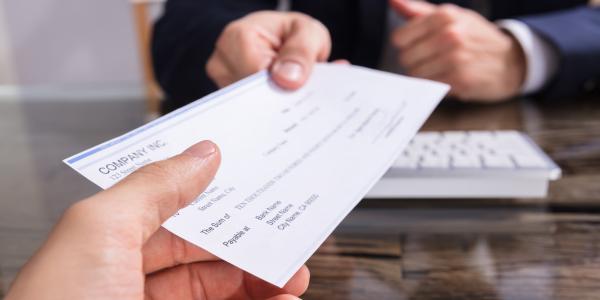CHEQUE FRAUDSTERS WANT SOMETHING FROM NOTHING
- lexperspective10
- Feb 7, 2021
- 4 min read
Cheques are still the number one method used by businesses today. As the measures are taken to check the validity of cheques increase, so do the methods of fraud cheques. There are many types of fraud. Fraud cheques are a business, and they deceive people in different ways. They do anything to get ‘something for nothing’. It is important that we stay aware and one step ahead of these fraudsters and their activities.
SOME EASY STEPS TO TAKE:
1. ‘check everything’: The Z-method is looking over a cheque from the top left corner to the top right corner, through the body and down to the bottom left corner, and over to the bottom right.
2. Specifically, look for spelling errors, microprinting, weird fonts, and such.
3. Check if there are any watermark that suggests fraud, check the quality of the cheque by looking at it against bright light and smear color when you rub it.
4. In case you are a store clerk and the customer is settling the bill with a cheque, make sure they don’t try to distract or deceive you at any point. In case you find anything suspicious, try handling the situation smartly and don’t confront the fraudster about any fraud. Because we don’t know how a fraudster may react and it is important to not take a chance on one’s safety.
5. Payroll fraud is common, make sure you know the employee who’s hiring you and not a fraudster especially if it’s online.
6. If you own a large business with high-value transactions, it can be useful to invest in technologies to check the validity of cheques.
7. Cashback from cheques can be a warning sometimes. As I mentioned previously, fraudsters want ‘something for nothing’.
SOME COMMON TYPES OF FRAUD:
Cheque forgery
It is forging someone’s name on the cheque or taking someone else’s cheque and forging their signature and depositing it in their account. Proper verification before accepting a cheque will avoid forgery by asking for ID, see if the signature is stamped, hold the sign up to the light to check the validity. As I previously mentioned, if the business is on large scale, consider investing in signature verification tools.
Identity theft
The fraudster steals personal details from someone and open a bank account in that person’s name and write bad cheques from it.
Chemical alteration
Altering filled and valid cheque with a chemical substance to erase the information and rewrite new information. They usually write the cheque out to themselves or change the amount. This can be detected if more attention is paid to the inconsistent handwriting, visible signs of alteration if the alteration was not chemical, any signs of erasing or modification. Immediately report on stolen cheques.
Cheque theft
This involves forgery. The fraudster steals someone’s cheque and forges sign or steal an account number, print and use cheque from that account. When a thief steals a cheque, that’s usually referred to as counterfeiting.
Counterfeiting
Counterfeiting is another common type of fraud. Usually, a large group of fraudsters is involved in this. They mostly take advantage of innocent, homeless, youngsters, or elderly who are desperate for cash. Even if you don’t write cheques, you can be caught up in this. They usually do this by creating a burner account, an account that is used to carry out fraud transactions.
Money order fraud
The scam artist gives the victim a money order and then asks for a cheque in return. They may use all kinds of excuses to convince the victim to make this trade. Later, the victim deposits the fund into their bank account and discover that the money order isn’t real, and they lose all the funds from their cheque. Although this scam can be overlooked by asking themselves a series of question like if they know the person who gave the money order if they trust the person who gave the money order if they have individually met in person or have only communicated electronically, did they notice a lot of issues with grammar or odd phrasing, or if the individual who gave the cashier’s check or money order request change in cash or from a wire transfer. Asking these questions should create a suspicion if the money order was a fraud.
HOW TO DETECT AND PREVENT CHEQUE FRAUD
- Automated check image analysis
- Secure barcodes
- Ultraviolet technology
- Signature verification tools
- Transaction analysis
- Employee and customer education
There are more ways to detect fraud, it is suggested to invest in some of these if your business is carried out on large scale and if it is more vulnerable due to many reasons. The types of fraud listed above are not all, fraudsters are finding new ways to cheat, so we must be one step ahead and keep our business in safe hands. Even if we take simple precautions, we can avoid many frauds. The penalty for fraud may vary depending on the type of fraud committed. It may be fine, incarceration, probation, restitution, or such.
SWAMINI MURALI






Comments